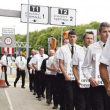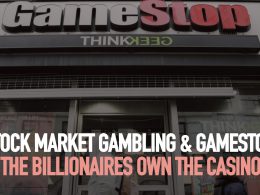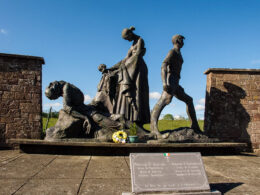Organising the working class is the key to victory
1.7 million people marched in Hong Kong on Sunday 18 August in yet another gigantic display of anger and defiance against the local (Hong Kong) and central (Beijing) governments. The struggle now enters its 12th week as the Chinese dictatorship shows no signs of shifting from its strategy of increasingly brutal police repression and zero concessions as a ‘solution’ to the rolling political crisis. This analysis was written before Sunday’s demonstration.
Simon Cheung, Socialist Action (CWI Majority in Hong Kong)
The unprecedented mass anti-extradition law movement, which was sparked by the Hong Kong government’s attempt to amend a law to allow the extradition of “fugitives” to mainland China, has lasted for more than two months.
Hong Kong Chief Executive Carrie Lam and the CCP (Chinese Communist Party) regime behind her had hoped to wear down the mass movement, but it still maintains strong momentum. In fact, the anger of the masses has gone beyond the five demands put forward by the movement in its early stages, which are the complete withdrawal of the extradition law (it has only been ‘suspended’), an independent public investigation into the police violence against young protesters, the release of those arrested, the dropping of ‘riot’ charges which can lead to ten years imprisonment, and real elections based on universal suffrage.
The mass anger is now directed against the entire authoritarian system and the CCP. As some demonstrators have said, even if Carrie Lam stepped down or announced an independent investigation into police violence, the movement would probably not end.
It is reported that at the recent Beidaihe meeting in China, a yearly informal meeting of incumbent and retired top CCP officials, Xi Jinping faced many criticisms for failing to control the situation in Hong Kong. At least for now, Xi Jinping has decided not to send in the People’s Liberation Army to crackdown in Hong Kong (although there are already signs that the possibility of military crackdown in the future is not small), because this will cause extremely serious political and economic consequences for the CCP itself.
Instead, Xi is demanding the Hong Kong police, backed up by mainland Chinese police and paramilitary troops disguised as Hong Kong police, conduct a fiercer crackdown, “arresting more demonstrators and giving out higher sentences”, in an attempt to intimidate the demonstrators and quell the movement.
Police violence intensifies
More brutal crackdowns have already begun. The police banned four demonstrations on August 10-11, part of a strategy to implement creeping martial law. At the same time, police violence rose to a new level on August 11 across Hong Kong. A young female demonstrator in Tsim Sha Tsui was hit by a beanbag round and blinded in one eye. Inside the Tai Koo MTR subway station, police fired pepper-spray balls at close range at demonstrators exiting the down escalator. In addition to the injuries directly caused by the pepper balls, this reckless action could have caused a stampede.
Police fired tear gas inside Tsuen Wan MTR station, which in such a confined space can cause lasting damage to passengers’ health. Police from the Special Duties Unit, an anti-terrorist force, were revealed as having disguised themselves as demonstrators and lit a fire in Causeway Bay in order to create chaos and provide a pretext for police to arrest demonstrators. In North Point and Tsuen Wan, pro-government criminal gangs indiscriminately attacked demonstrators and passers-by. Police brutalities are too numerous to be listed.
While the repression becomes more vicious, the CCP and the Hong Kong regime are likely to misjudge the situation again and suffer a backlash. The police violence on August 11 became the spark for the large-scale ‘occupy’ demonstrations at the airport on the following two days, which resulted in 180 and 400 flights cancelled respectively (Hong Kong Airport has about 800 flights a day), with the airline business losing HK$600 million (77 million US dollars).
The main reason that this movement without leadership has been able sustain itself at such a high level until now and still has huge momentum is that the crazed police violence has triggered larger and larger mass anger. This has been the case from the start. Carrie Lam’s contempt for the masses and the fierce conflict outside the Legislative Council building on June 12 pushed two million people onto the streets on June 16, which is the largest demonstration in Hong Kong’s history.
On July 21, the bloody attack by pro-government gangs on demonstrators and passengers in Yuen Long MTR station prompted rank-and-file civil servants and other groups to protest on the internet and contributed to the historic August 5 general strike. On the weekend of August 11-12, ignoring police bans, large numbers of citizens and youth went onto the streets and clashed with the police. Therefore, a fiercer round of police repression could very likely further escalate the movement.
Since the demonstration outside the CCP’s China Liaison Office in Hong Kong in July, the Chinese regime has adopted a more hardline stance. In less than a month, the Hong Kong and Macau Affairs Office, the main government agency overseeing Hong Kong, has held three press conferences to condemn the mass movement and give firm support to the violent actions of the Hong Kong police, also threatening that if the movement continues the central government will intervene.
At the same time, the CCP ordered Carrie Lam to stop hiding behind the scenes. The masses joke that Carrie Lam, “has gone on strike and is hiding behind the police.” Now, her “resurrection” with a newfound “might” and “confidence” is only down to Beijing’s new orders, not because the balance of power between the government and the movement has really changed.
Support from big business
The CCP is also pressuring Hong Kong’s big business groups to get back in line. Unlike during the Umbrella Movement five years ago, Hong Kong’s big capitalist tycoons have largely remained silent for the past two months. They don’t want to offend the CCP, but at the same time they are afraid of this unprecedented mass movement. Lots of people marched on the New Town Plaza, a shopping mall owned by Hong Kong’s biggest property conglomerate, protesting that its staff facilitated the police attack on demonstrators inside the mall on July 17. This is also why the Harbour City, another huge shopping mall, recently posted a notice at its main entrance: “Police shall not enter unless there is a crime.”
But now the situation is changing. Not long ago, the Civil Aviation Administration of China warned Hong Kong’s Cathay Pacific Airways that aircrew who join or support illegal protests are forbidden from entering Chinese airspace. Subsequently, Cathay warned its staff that if they participate in illegal demonstrations they might be fired. At the same time, Cathay fired two employees because they leaked the flight information of a Hong Kong police football team going to China. A Cathay pilot who is charged with riots has been suspended from duty, meaning Cathay bosses consider the pilot guilty before the court makes a judgement.
Meanwhile, Carrie Lam led a group of big business representatives to attend a press conference in order to demonstrate she has won the support of the capitalists. This is the result of the CCP’s pressure. The CCP is demanding or threatening more capitalists to speak up against the mass protests. More than ten real estate developers as well as Cathay Pacific recently advertised in the newspapers their support for Carrie Lam’s government, demanding demonstrators “stop violence.”
There is no doubt that these public displays of support are being orchestrated by the CCP, because not long ago ifeng.com, a Hong Kong media group under CCP control, published an article criticising Hong Kong’s four major tycoon families for their “collective silence”. Hong Kong’s big businesses have huge commercial interests in China. One fifth of Cathay’s flights are destined for China, and one-third of its shares are owned Air China, a state-owned Chinese airline. Air China is the second largest shareholder of Cathay and has five seats on its board. John Swire & Sons (HK), the largest shareholder of Cathay, targets mainland China as its main market.
Moreover, these big business groups have always relied on the CCP dictatorship to maintain Hong Kong’s undemocratic political system, allowing them to exploit workers more aggressively and get more profits. Andy Xie, an independent economist in China, said in an interview with CNBC that extremely high house prices are a major reason for the mass movement in Hong Kong.
House price in Hong Kong have tripled since 2003 on average, while wage rises have stalled, and so it’s very difficult to see how young people can feel any hope. Andy Xie said that if the CCP wants to solve the social and political crisis in Hong Kong, it must “take power away from the tycoons”. Clearly the CCP will not do this because the capitalist tycoons are one of the key pillars of the CCP’s rule over Hong Kong.
As the British Financial Times (August 13, 2019) said, the CCP has “outsourced” control of Hong Kong to this small group of oligarchs who completely dominate its economy. Big business relies on Hong Kong’s undemocratic system to suppress workers’ living standards and their rights, opposing an eight-hour working day, universal pension entitlement, large-scale public housing construction and substantial increases in the minimum wage, which has resulted in extremely serious wealth inequality, overwork, a housing crisis and the collapse of public services. On these issues the capitalists stand together with the CCP.
Therefore, the mass movement should not only fight against the authoritarian regime and the violence of police and gangs, but also needs to confront the capitalists who stand together with and defend the regime. This further underlines that the movement needs a new direction. In order to break the current political stalemate accompanied by escalating police violence, end the rule of the tycoons, and achieve true democracy under the control of the working class majority, it is necessary for the organised working class to take the main role in the movement.
Prepare for another general strike
The August 5 strike in which 350,000 people participated was a good start. It was the first real political strike in Hong Kong for almost 100 years. This is despite the fact the strike was not called or led by the trade unions, who played a very minor role, with up to 90 percent of those who went on strike not being unionised, but rather following the calls to strike on social media. The movement now needs to prepare for another more extensive general strike. But a new general strike should be organised through strike committees in the workplaces, to attract the hesitant or fearful workers by showing the power of organisation.
At the same time, the students’ strike now being prepared is also of great significance. A large-scale students’ strike can encourage workers’ struggles. Another round of workers’ and students’ strikes is vital to the entire campaign in many ways.
Recent mostly online debates within the movement about a ‘big stage’ (symbolising central leadership by the pan-democrats in the past, but in a very bureaucratic top-down manner) indicate that the movement faces a leadership crisis. The current movement has no leadership and the bourgeois pan-democrats have almost no authority in the movement. But the pan-democrats are trying to take advantage of the current stalemate to regain control.
Many demonstrators have begun to feel tired of the conflicts of the past few weeks – with the police but also internally. This does not mean that the movement is losing momentum, but many demonstrators are questioning conflicts with the police that have no specific goal and no actual result, plus there are more and more signs that police disguised as demonstrators are deliberately provoking conflicts to create an excuse for repression (such as the incident where two mainlanders were attacked at the airport on August 13).
Many demonstrators therefore begin to hope for a return to peaceful demonstrations led by the pan-democrats. Both peaceful demonstrations and recent protests outside police stations are actions the movement should take. It is right to strongly protest police violence and arbitrary politically motivated arrests, and it is incontestable that the police are overwhelmingly responsible for the street clashes. As the demonstrators say, “no police, no violence”.
The movement needs organisation and real leadership to provide a clear direction, but the pan-democrats have never provided such leadership for the Hong Kong democracy struggle. Instead, they have invariably tried to put a brake on the struggle because their perspective is reform not revolution, of making a deal with the regime, and they are therefore worried about the movement “going too far” and beyond their control.
That pan-democrats have lost their leadership position is one of the reasons the current movement has been able to continue to this day and has acquired such tremendous power. But this decentralised and leaderless model is now running up against its limits. The movement needs to be organised and the method of organisation needs to be democratic, electing and re-electing leaders through democratic structures, to prevent top-down control of the movement by a small circle of pan-democratic politicians and social media celebrities.
Building an organised working class force within the movement is what can provide a critical framework for the organisation of the entire movement. At the same time, we also need to organise a political response to the growing threat of a PLA takeover. On August 15, PLA vehicles appeared on Hong Kong streets. In today’s highly tense situation, this is not an “unintentional move”.
The day before, Trump posted a tweet saying the US intelligence services had confirmed the CCP is dispatching troops to the Shenzhen-Hong Kong border. Although Xi Jinping does not intend to use the PLA at present, he will not give up this option completely, because as the movement continues to develop, the CCP cannot rely solely on the police to control the situation.
How can the Hong Kong movement stand against the CCP, the largest dictatorship in the world? In order to win it must issue a sincere appeal to the Chinese working class for united struggle against the dictatorship that oppresses the masses on both sides of the border. Obviously, the Hong Kong mass movement on its own cannot defeat the CCP.
Western governments not to be trusted
Nobody should expect the US, European or Taiwan governments to offer real help to the Hong Kong masses. Including Trump and Tsai Ing-wen, the Western and Taiwan governments are pushing anti-democratic and anti-worker agendas in their own countries. Chinese nationalists have been using examples of police violence in the US and Europe to “justify” state repression in China and Hong Kong.
Trump previously said the mass movement in Hong Kong was a “riot” and drew praise from the CCP for this. At the G20 summit in late June, Trump deliberately avoided talking about Hong Kong in order not to offend Xi Jinping.
As a result of the US-China conflict, the US and European governments have exerted greater pressure on the CCP on human rights issues in an attempt to pressure the CCP to make economic and trade concessions. Trump has now shifted, under pressure from within the US ruling class, and says: “China wants to make a trade deal but it should treat Hong Kong ‘humanely’ first.” But he also described Xi as “a great leader who very much has the respect of his people”. For the masses in China and Hong Kong there is nothing more ridiculous or ironic than this. If CCP is willing to make concessions on trade issues, Trump will not mind “sacrificing” Hong Kong.
The only real support that the Hong Kong mass movement can rely upon is grassroots workers in China and globally. The movement must appeal to the struggling Chinese workers and youth for a joint challenge against the CCP dictatorship, to eliminate the exploitation and all social injustices that this authoritarian capitalist system means for both Chinese and Hong Kong workers and youth. This means fighting for a democratic socialist alternative based on the needs of society and the working class majority rather than the super-profits of the capitalist tycoons and CCP elite.












